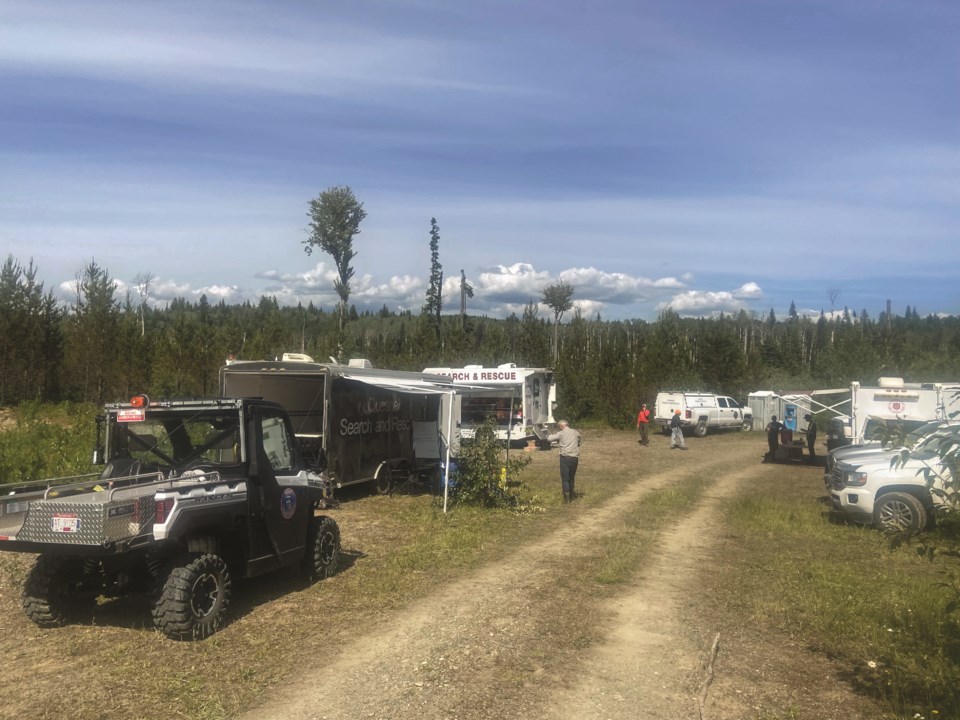The first weekend since the province loosened travel restrictions as part of Phase 2 of B.C.’s restart plan proved to be a busy one for Whistler and Squamish search-and-rescue teams, and could be a sign of things to come for the summer.
“I think it’s going to be a very busy summer. COVID has introduced a lot of people that are not traditionally outdoors to the backcountry,” said Whistler Search and Rescue (WSAR) manager Brad Sills. “The more people going out there that are new to the sport, the higher the incidence of requests for help from us.”
The calls began late Saturday morning, June 19, when Squamish Search and Rescue (SSAR) responded to a climber with a leg injury that required a helicopter evacuation from the Tantalus Range. Forced to wait for the right weather to fly, SSAR later attended another call around dinnertime after a hiker collapsed on the Sea to Summit Trail. SSAR manager BJ Chute said Sea to Sky Gondola staff also assisted in transporting the hiker via ATV to the top gondola station for aid.
Around the same time, Pemberton Search and Rescue (PSAR) treated and transported a mountain biker with a pelvic injury from the Mackenzie Basin trails. Marking the only call for PSAR over the weekend, it continued a curious trend for Pemberton in the pandemic—at least compared to the corridor’s other SAR teams.
“As you saw in the wintertime, it was certainly busy on the Duffey Lake Road, but that did not relate to an increase in call volume at all for us,” said PSAR president Pete Schimek, who noted that the team’s call volume is mostly consistent with pre-pandemic numbers.
Early Sunday morning, June 20, WSAR was called in to provide a rapid intervention team to a large-scale search for a 70-year-old hunter who was first reported missing last Thursday evening, June 17. WSAR joined 13 other teams from across the province in the search, which, at press time, had yet to locate the missing Quesnel man.
“The Cariboo is fairly flat, but so much of it is muskeg, so if you have a serious injury in there it would be forever and a day getting them out,” Sills noted.
The multi-team call spoke to the level of coordination amongst SAR teams in the province, and particularly in the Sea to Sky and Lower Mainland. With a WSAR team dispatched to Quesnel, neighbouring Squamish and North Shore SAR teams were tasked with covering the Whistler area, triggering a domino effect that enables some of the busiest search-and-rescue teams in the province to fill in gaps as needed.
“One of the great and unique things about search and rescue in this province is we all train to the same set of standards and our operating guidelines are provincial, so it allows … teams to cover each other off at busy times and it also allows teams to offer speciality skills that some of the other teams may not have,” said Chute, highlighting how Squamish regularly relies on the Whistler crew’s avalanche experts in the winter, while WSAR is more likely to call on Squamish for assistance in swiftwater rescues in the summer. Although it has members trained in long-line rescues, Schimek said PSAR has yet to be provincially certified as a Class D team, meaning it often relies on WSAR for long-line manoeuvres.
“I can speak with confidence that the Sea to Sky teams work quite closely together and maintain regular contact, especially if there are calls that are on our response-area border,” Chute added.
Later in the afternoon on June 20, Squamish attended another call—one of seven responses over the weekend—on the Stawamus Chief after a climber fell on Butt Light, a popular route up the monolith, injuring their lower leg. The subject was hoisted into a helicopter and transported to pre-hospital care.
Then, just as Whistler’s rapid intervention team was leaving Quesnel for the long flight home, SSAR attended a call on the edge of Whistler’s jurisdiction, after a lead climber took a serious fall off Mount Fee, striking another climber on the way down. The BC Coroners Service confirmed one climber died in the accident, adding that, due to privacy considerations, the agency would not release any identifying details of the deceased. Two choppers were deployed in the hours-long rescue, and crews used a winch to fly out the surviving climber, who suffered serious injuries.
It’s been an incredibly busy season for both Whistler and Squamish SAR. At 56 calls to date this year, SSAR has already doubled its call volume from the same period in 2019, which is also well above the 33 calls it had responded to by this point last year.
As of June 1, Whistler was the second busiest SAR team in the province, Sills said, after the North Shore Rescue Society, with 37 calls. That compares to 25 callouts by that point last year.
WSAR garnered close to 50 applicants this spring in its first membership drive since 2014, which the organization will whittle down to about a dozen new members over the summer.
Sills was quick to remind the public that search-and-rescue in B.C. comes at no cost to the end user, and recreationalists shouldn’t hesitate to call 911 if they are in need of help.
“We’ve had a couple of instances on the Sunshine Coast where people have not called SAR because they had heard that the policy changed and you need insurance. So we just want to make sure that people understand it’s a government service, and it should not be abused—it’s not a taxi service—but it’s free,” he explained.



.jpg;w=120;h=80;mode=crop)


